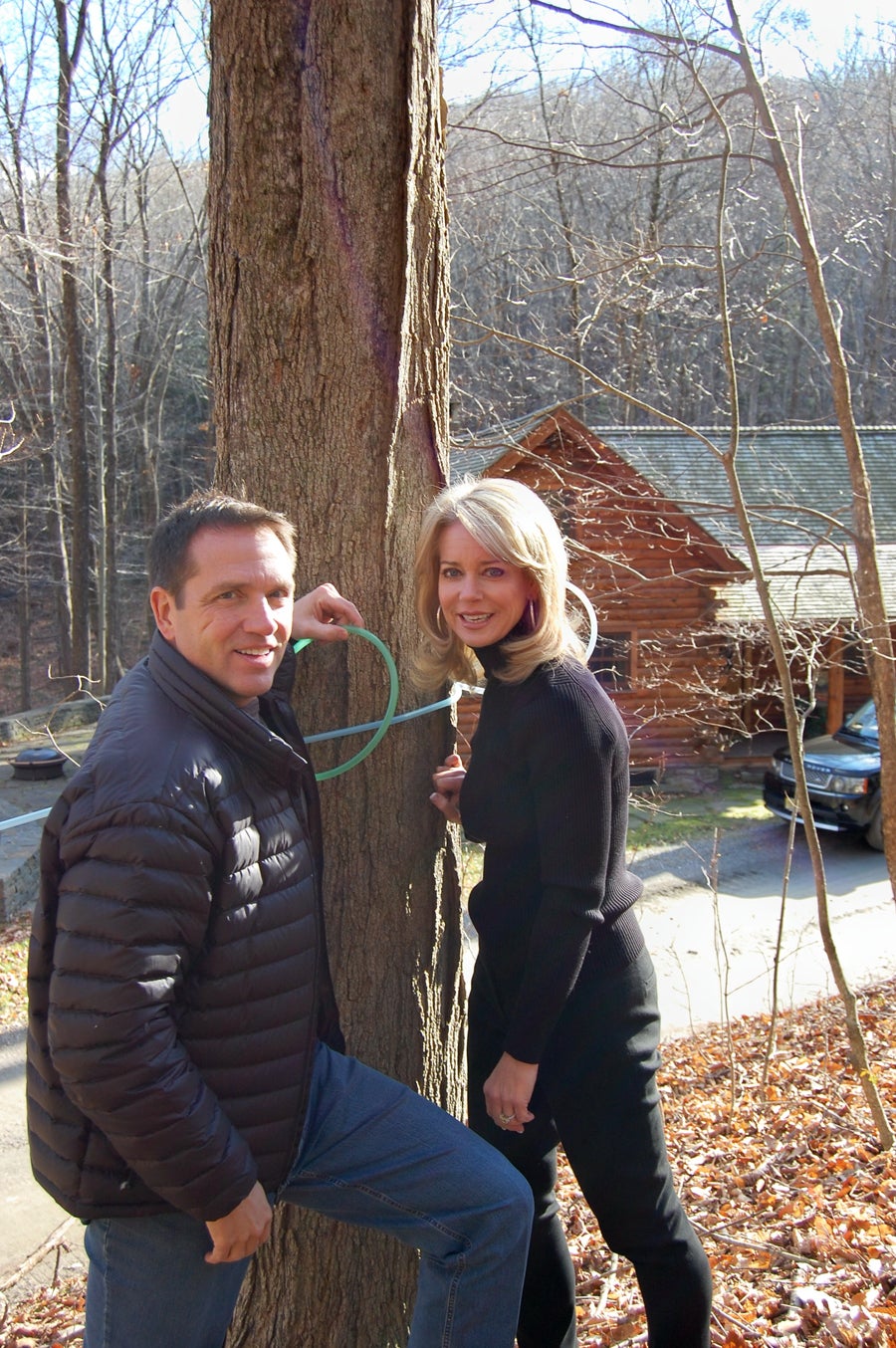Sweetness on Tap: Q&A with Robb and Lydia Turner

Crafted by Robb and Lydia Turner on their woodland farm in New York’s Hudson River Valley, Crown Maple Syrup qualifies as a sustainably produced, certified-organic sweetener. We talked with the Turners in anticipation of maple-tapping season, which runs from mid-February to early April, the peak time of year for sap flow. The sap supplies the raw material for the Turners’ artisanal syrup varieties, from roasted-nut-and-salted-caramel-tasting light to brown-sugar-and-almond-flavored dark.
VT: What makes your harvesting of maple sap sustainable? How can you be sure that tapping doesn’t harm the tree?
Robb: Our harvesting of sap is basically a more advanced version of how the Iroquois tapped trees hundreds of years ago. We use a sophisticated system that collects sap under pressurized lines; the system works with a 5/16-inch tap, and the small hole seals over quickly after sap season. We’re careful not to put too many taps in any single tree. We also clean our lines to prevent bacteria from harming our trees.
Lydia Foresters estimate that our process is so gentle that we could collect sap from the same trees for as many as 300 years.
VT: How do climate and soil conditions affect the taste of maple syrup?
Robb: Here in Dutchess County, glacial soil deposits provide plenty of nourishing minerals. The soil also supports root systems for drawing on water sources. Dry, hot summer weather can stress maple trees and decrease sugar production. Our average summer temperatures are similar to those in maple-growing areas north of us, but our position to the south allows for a longer growing season. With such ideal conditions we have an abundance of very large, old maple trees in exceptionally good health. Our trees are on average 80 to 150 years old. They have very complicated root systems, which produce syrup with a complex maple taste.
VT: How do you create your different varieties of maple syrup?
Robb: It’s mostly in the timing. During the earlier, colder part of the sap season, when the trees are more dormant, there is little bioactivity, so the syrups are lighter. They’re darker at the end of the season, when the weather is warmer during the day and the trees are more active. Another key is how long it takes to reduce the sap down to syrup after it leaves the tree; we typically keep the time to within six hours. That, along with the advanced filtering system we use, allows us to produce more lights and mediums than conventional manufacturers.
VT: How would you describe the taste of the sap straight from the tap?
Robb: Sap has a very subtle sweet taste, but primarily it tastes like water. We prefer the syrup!